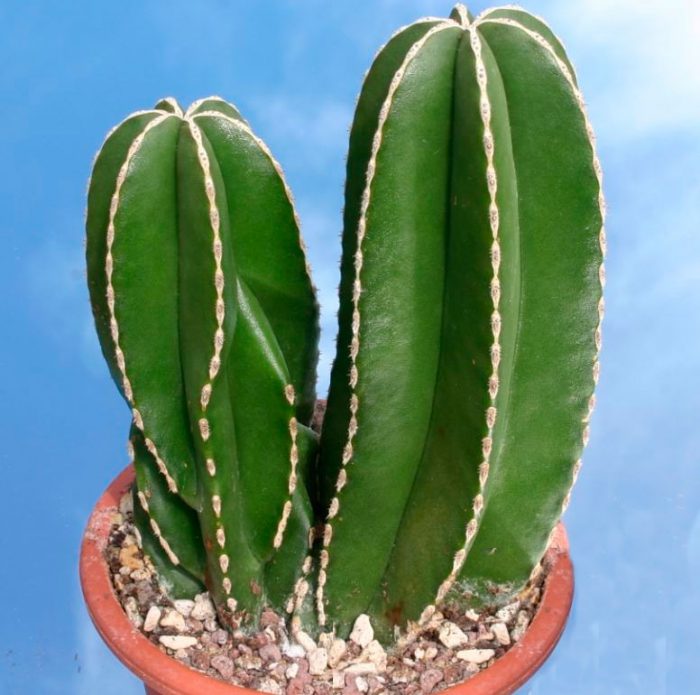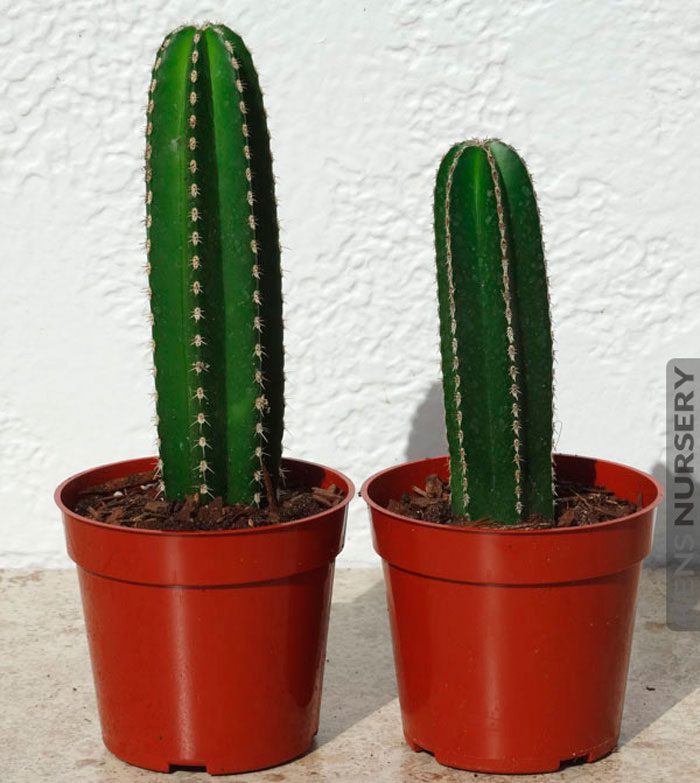A plant like lemerocereus is directly related to the cactaceae family, and can be found naturally in South Africa. It was named after the botanist Charles Lemaire. This famous Frenchman lived in the 19th century.
In the wild, this plant looks like a multifaceted column, which reaches 15 meters in height and 50 centimeters in diameter. This cactus branches in the middle of the stem, which is why it has an external resemblance to a candelabrum.
Many growers would like to have such a plant in their collection, but it is quite capricious and prone to various diseases. Therefore, it is quite difficult to grow lemerocereus at home.
For growing in an apartment, Lemaireocereus marginatus is most often chosen. On a rather powerful stem, ribs are clearly distinguished, on which dense whitish bristles are located. Subulate straight spines in length reach 10 centimeters. Adults and older specimens have cream or white flowers, reaching a length of 7 centimeters. After flowering, edible thorny soft oval fruits appear.
Content
Lemerocereus care at home
Illumination
He loves light very much, so you need to choose a well-lit place to place it. It should be remembered that such a cactus is slow-growing.
Temperature regime
For normal growth and development, the plant requires a moderate air temperature, and all year round. In winter, the room containing the lemarocereus should not be colder than 12 degrees.
How to water
During the summer and autumn period, the plant is watered moderately. In winter, watering should be reduced.
Humidity
Lemarocereus feels fine in a room with low air humidity and does not need to be humidified from a sprayer. In the summer (especially in the heat), the cactus is best moved outside, or at least open the vents.
Transplant features
While the cacti are young, they need to be transplanted once a year, and adults undergo this procedure only if necessary. The transplant is recommended in the spring. To do this, it is best to use a clay-turf soil mixture, which should contain up to 30 percent gravel.
Reproduction methods
You can propagate by cuttings. The cutting should be dried in the open air for 2-3 days, and then planted in moistened sand. The vegetative method of reproduction is used quite rarely, as it is ineffective. Lemerocereus can be grown from seeds.
Possible problems
- The ends of the stems dry, there are spots of soft rot - this is due to overflow. Carefully trim the affected areas and try to provide the cactus with proper care (regularly ventilate the room, prevent overflow and maintain the temperature in the room at the required level).
- There are soft brownish spots on the surface of the cactus - the plant is infected with stem rot. Remove the affected areas by cutting them out and treat the substrate with carbendazim solution.
- Fluffy whitish spots formed on the surface of the plant - mealybugs have settled. In the event that the lesion is insignificant, it will be enough to wash the problem area with a wet rag. If there are many pests, then it will be necessary to carry out treatment with an appropriate preparation.












